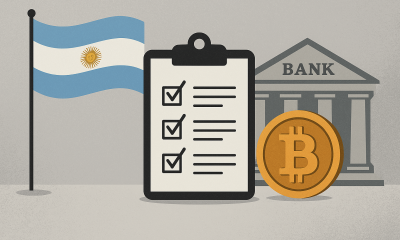

others
Japanese Yen remains stronger as US Dollar weakens ahead of PCE inflation – Crypto News
- The Japanese Yen gains ground after the release of the Tokyo CPI data on Friday.
- The JPY’s downside may be limited as traders may continue unwinding their carry trades ahead of the BoJ meeting.
- The US Dollar may limit its downside as recent US economic data have reduced rate cut expectations for September.
The Japanese Yen (JPY) edges higher after the Statistics Bureau of Japan released the Tokyo Consumer Price Index (CPI) data on Friday. The JPY receives support as traders potentially unwind their carry trades ahead of the Bank of Japan’s two-day policy meeting, concluding on Wednesday. During the meeting, the board will discuss the possibility of raising interest rates and outline details on tapering its extensive bond purchases.
Japan’s top currency diplomat, Masato Kanda, informed the G20 on Friday that foreign exchange (FX) volatility negatively impacts the Japanese economy. Kanda noted an increasing likelihood of a soft landing and emphasized the need to monitor the economy and implement necessary measures closely, according to Reuters.
The US Dollar may receive support as stronger US economic data have reduced some rate cut expectations for September. On Friday, attention will be on the release of the Personal Consumption Expenditures (PCE) Price Index for June.
On Thursday, the US Gross Domestic Product (GDP) for the second quarter (Q2) was stronger than expected. This follows Wednesday’s US PMI data, which indicated a faster expansion in private-sector activity for July, highlighting the resilience of US growth despite elevated interest rates.
Daily Digest Market Movers: Japanese Yen improves after the inflation data
- The headline Tokyo CPI for July increased by 2.2% year-over-year, slightly down from the previous 2.3% rise. The Tokyo CPI excluding Fresh Food and Energy went up by 1.5% YoY, compared to the earlier increase of 1.8%. Moreover, the CPI excluding Fresh Food also rose by 2.2% in July, matching market expectations.
- Bank of America indicates that strong economic growth in the United States allows the Federal Open Market Committee (FOMC) to “afford to wait” before making any changes. The bank states that the economy “remains on robust footing” and continues to expect the Fed to start cutting rates in December.
- According to CME Group’s FedWatch Tool, markets now indicate an 88.6% probability of a 25-basis point rate cut at the September Fed meeting, down from 94.0% a week earlier.
- On Thursday, the US GDP grew at an annualized rate of 2.8%, adjusted for seasonality and inflation, up from the previous reading of 1.4% and surpassing forecasts of 2%. Additionally, Initial Jobless Claims fell to 235K in the week ending July 19, compared to the previous reading of 243K and the expected 238K.
- On Wednesday, Japanese Finance Minister Shunichi Suzuki, Chief Cabinet Secretary Yoshimasa Hayashi, and top currency diplomat Masato Kanda avoided commenting on foreign exchange matters, according to Reuters.
- The Japanese Cabinet Office kept its economic assessment unchanged for July but cautioned about a bleak outlook, noted in its monthly report on Thursday. The government also downgraded its evaluation of exports, indicating that they are stagnating.
- The BlackRock Investment Institute noted in its mid-year outlook that Japan’s economic recovery and rising inflation make its equity market one of its strongest convictions. The firm anticipates that the Bank of Japan will not raise interest rates at next week’s meeting.
- Reuters reported on Monday that a senior official in the ruling party, Toshimitsu Motegi urged the Bank of Japan (BoJ) to more clearly communicate its plan to normalize monetary policy through gradual interest rate hikes, according to Reuters. Prime Minister Fumio Kishida added that normalizing the central bank’s monetary policy would support Japan’s transition to a growth-driven economy.
- JP Morgan has anticipated no rate hike from the Bank of Japan (BoJ) in July or at any point in 2024. A July rate increase is not their base case, and they do not expect any hikes for the remainder of 2024. They believe it is too early to adopt a bullish stance on the Yen.
Technical Analysis: USD/JPY hovers around 154.00
USD/JPY trades around 154.00 on Friday. The daily chart analysis shows that the USD/JPY pair has returned to the descending channel, indicating the weakening of a bearish bias. However, the 14-day Relative Strength Index (RSI) is positioned at the level of 30, indicating an oversold situation and a potential short-term rebound.
The USD/JPY pair may test the lower boundary of the descending channel around the level of 153.50, followed by May’s low of 151.86 level. Further support could be found at the psychological level of 151.00.
On the upside, the USD/JPY pair may test the “throwback support level turned resistance” around the 154.50 level. Further resistance appears at the nine-day Exponential Moving Average (EMA) of 155.80, followed by the upper boundary of the descending channel around 156.60.
USD/JPY: Daily Chart
Japanese Yen PRICE Today
The table below shows the percentage change of Japanese Yen (JPY) against listed major currencies today. Japanese Yen was the strongest against the New Zealand Dollar.
| USD | EUR | GBP | JPY | CAD | AUD | NZD | CHF | |
|---|---|---|---|---|---|---|---|---|
| USD | -0.09% | -0.08% | -0.06% | -0.06% | -0.17% | 0.04% | -0.07% | |
| EUR | 0.09% | 0.01% | 0.03% | 0.04% | -0.10% | 0.15% | 0.03% | |
| GBP | 0.08% | -0.01% | 0.02% | 0.03% | -0.09% | 0.13% | 0.00% | |
| JPY | 0.06% | -0.03% | -0.02% | -0.00% | -0.09% | 0.11% | 0.00% | |
| CAD | 0.06% | -0.04% | -0.03% | 0.00% | -0.12% | 0.09% | -0.02% | |
| AUD | 0.17% | 0.10% | 0.09% | 0.09% | 0.12% | 0.22% | 0.12% | |
| NZD | -0.04% | -0.15% | -0.13% | -0.11% | -0.09% | -0.22% | -0.12% | |
| CHF | 0.07% | -0.03% | -0.01% | -0.01% | 0.02% | -0.12% | 0.12% |
The heat map shows percentage changes of major currencies against each other. The base currency is picked from the left column, while the quote currency is picked from the top row. For example, if you pick the Japanese Yen from the left column and move along the horizontal line to the US Dollar, the percentage change displayed in the box will represent JPY (base)/USD (quote).
Japanese Yen FAQs
The Japanese Yen (JPY) is one of the world’s most traded currencies. Its value is broadly determined by the performance of the Japanese economy, but more specifically by the Bank of Japan’s policy, the differential between Japanese and US bond yields, or risk sentiment among traders, among other factors.
One of the Bank of Japan’s mandates is currency control, so its moves are key for the Yen. The BoJ has directly intervened in currency markets sometimes, generally to lower the value of the Yen, although it refrains from doing it often due to political concerns of its main trading partners. The current BoJ ultra-loose monetary policy, based on massive stimulus to the economy, has caused the Yen to depreciate against its main currency peers. This process has exacerbated more recently due to an increasing policy divergence between the Bank of Japan and other main central banks, which have opted to increase interest rates sharply to fight decades-high levels of inflation.
The BoJ’s stance of sticking to ultra-loose monetary policy has led to a widening policy divergence with other central banks, particularly with the US Federal Reserve. This supports a widening of the differential between the 10-year US and Japanese bonds, which favors the US Dollar against the Japanese Yen.
The Japanese Yen is often seen as a safe-haven investment. This means that in times of market stress, investors are more likely to put their money in the Japanese currency due to its supposed reliability and stability. Turbulent times are likely to strengthen the Yen’s value against other currencies seen as more risky to invest in.
-
Technology1 week ago
Crypto Lawyer Bill Morgan Praises Ripple’s Multi-Chain Strategy as RLUSD Hits $1.1B – Crypto News
-

 Blockchain1 week ago
Blockchain1 week agoAnalyst Reveals What You Should Look Out For – Crypto News
-

 Blockchain1 week ago
Blockchain1 week agoStripe and Paradigm Open Tempo Blockchain Project to Public – Crypto News
-
others1 week ago
Breaking: Labor Department Cancels October PPI Inflation Report Ahead of FOMC Meeting – Crypto News
-

 Cryptocurrency1 week ago
Cryptocurrency1 week agoArgentina moves to reshape crypto rules as banks prepare for Bitcoin services – Crypto News
-
others1 week ago
HYPE Price Drops 7% as $2.2M Shift and 10M Token Unlocks Stir Fear — What’s Next? – Crypto News
-

 Technology1 week ago
Technology1 week agoStarlink India pricing revealed: How much does monthly plan cost and what are its benefits? – Crypto News
-

 Blockchain1 week ago
Blockchain1 week agoBMW Helps JPMorgan Drive Blockchain-Based FX Payments – Crypto News
-

 others1 week ago
others1 week agoNasdaq futures hold key structure as price compresses toward major resistance zones – Crypto News
-

 others1 week ago
others1 week agoNasdaq futures hold key structure as price compresses toward major resistance zones – Crypto News
-

 Technology4 days ago
Technology4 days agoBig iPhone price drop on Flipkart with cashback and buyback offers – Crypto News
-
Business1 week ago
Solana Price Set for $150+ as Bullish Sentiment Rises in Crypto Market – Crypto News
-

 Business1 week ago
Business1 week agoBezos to Advise Security and Resiliency Initiative – Crypto News
-

 Business1 week ago
Business1 week agoBezos to Advise Security and Resiliency Initiative – Crypto News
-

 Cryptocurrency1 week ago
Cryptocurrency1 week agoCircle Wins ADGM License, Taps Former Visa Executive to Lead Middle East Push – Crypto News
-

 Cryptocurrency1 week ago
Cryptocurrency1 week agoCircle Wins ADGM License, Taps Former Visa Executive to Lead Middle East Push – Crypto News
-
others1 week ago
Bitcoin, Ethereum, XRP, Solana Rally Ahead of Fed Rate-Cut Decision – Crypto News
-

 Blockchain1 week ago
Blockchain1 week agoCanton Network Completes Second Onchain Treasury Financing Test – Crypto News
-

 Blockchain1 week ago
Blockchain1 week agoBittensor Set for First TAO Halving on Dec. 14 – Crypto News
-
others1 week ago
China Exports (YoY) came in at 5.7%, above forecasts (3.8%) in November – Crypto News
-

 Cryptocurrency1 week ago
Cryptocurrency1 week agoThursday links: Prediction markets, agent hackers, quantum risks – Crypto News
-

 Blockchain1 week ago
Blockchain1 week agoEthereum Founder Breaks Silence With Major Upgrade Proposal – Crypto News
-

 Business1 week ago
Business1 week agoBezos to Advise Security and Resiliency Initiative – Crypto News
-

 Business1 week ago
Business1 week agoBezos to Advise Security and Resiliency Initiative – Crypto News
-

 Technology1 week ago
Technology1 week agoSatya Nadella meets PM Modi, Microsoft commits $17.5 billion on India’s AI future – Crypto News
-

 Technology1 week ago
Technology1 week agoSatya Nadella meets PM Modi, Microsoft commits $17.5 billion on India’s AI future – Crypto News
-

 others1 week ago
others1 week agoNasdaq futures hold key structure as price compresses toward major resistance zones – Crypto News
-

 Blockchain1 week ago
Blockchain1 week agoSolana (SOL) Recovery Momentum Hinges on Price Closing Firmly Above $140 – Crypto News
-

 Blockchain1 week ago
Blockchain1 week agoBitcoin Santa Rally Talk Meets Last FOMC of 2025 – Crypto News
-

 Cryptocurrency1 week ago
Cryptocurrency1 week agoSHIB Burn Collapses 88.07% Ahead of Crucial December Update: Details – Crypto News
-

 others1 week ago
others1 week agoUSD/CNH weakens below 7.0700 amid soft domestic demand – BBH – Crypto News
-

 Business1 week ago
Business1 week agoBezos to Advise Security and Resiliency Initiative – Crypto News
-

 Business1 week ago
Business1 week agoBezos to Advise Security and Resiliency Initiative – Crypto News
-

 Business1 week ago
Business1 week agoBezos to Advise Security and Resiliency Initiative – Crypto News
-

 others1 week ago
others1 week agoAustralian Dollar holds hawkish RBA-led gains, eyes further upside – Crypto News
-
Technology1 week ago
Shiba Inu Price Surges as Whale Transfers Hit Highest Levels Since June – Crypto News
-

 others1 week ago
others1 week agoDow Jones tries to hold ground ahead of Fed rate call – Crypto News
-
others1 week ago
HYPE Price Drops 7% as $2.2M Shift and 10M Token Unlocks Stir Fear — What’s Next? – Crypto News
-

 others1 week ago
others1 week agoXAG/USD refreshes record high, around $61.00 – Crypto News
-

 Blockchain1 week ago
Blockchain1 week agoJudge Temporarily Stops Connecticut’s Action Against Kalshi – Crypto News
-

 Blockchain1 week ago
Blockchain1 week agoBlockchain Gains Momentum in Institutional Finance – Crypto News
-

 Blockchain6 days ago
Blockchain6 days agoJPMorgan Marks One of Earliest Blockchain-Based Debt Issuances – Crypto News
-
others5 days ago
Bestchange Review: Easily discover the best onramp and offramp trading platforms for crypto and fiat exchange. – Crypto News
-

 Blockchain1 week ago
Blockchain1 week agoAltcoin Rally Alert: 4 Bullish Signals To Watch Out For – Analyst – Crypto News
-

 Technology1 week ago
Technology1 week agoXbox reveals full December Game Pass schedule: Indiana Jones, Mortal Kombat 1 and more – Crypto News
-
others1 week ago
Crypto Market Set for Liqudity Pump With Fed Rate Cut Expected This Week – Crypto News
-
Technology1 week ago
Top 3 XRP Price Predictions for December 2025: Could It Reach These Levels? – Crypto News
-
Technology1 week ago
Zero-Knowledge Proofs Explained: How They Power Secure and Private AI Systems – Crypto News
-

 others1 week ago
others1 week agoDow Jones sheds 200 points as Treasury yields rise – Crypto News
-

 Business1 week ago
Business1 week agoBezos to Advise Security and Resiliency Initiative – Crypto News










